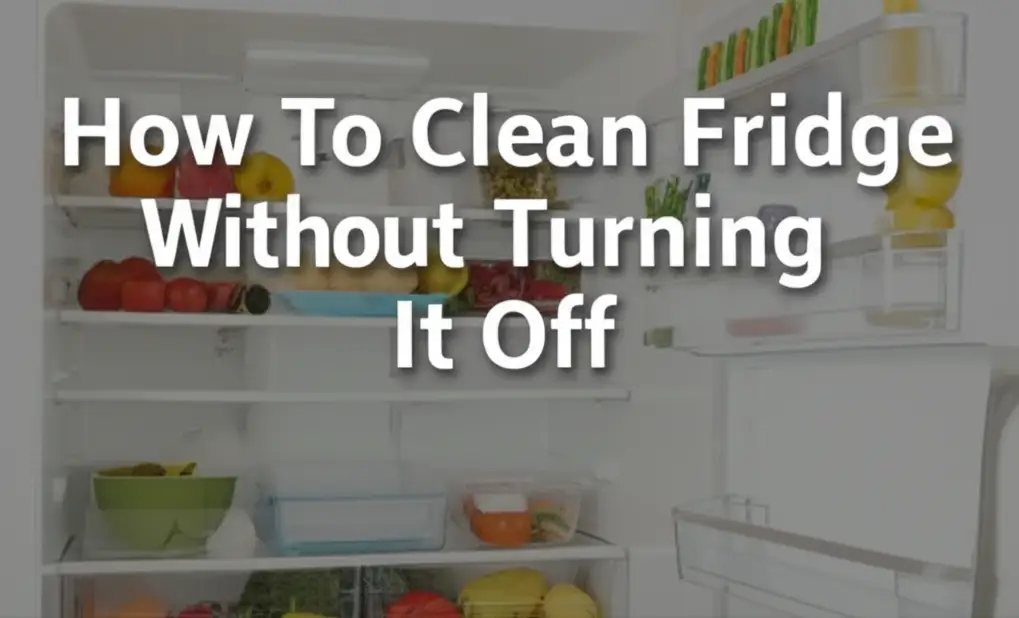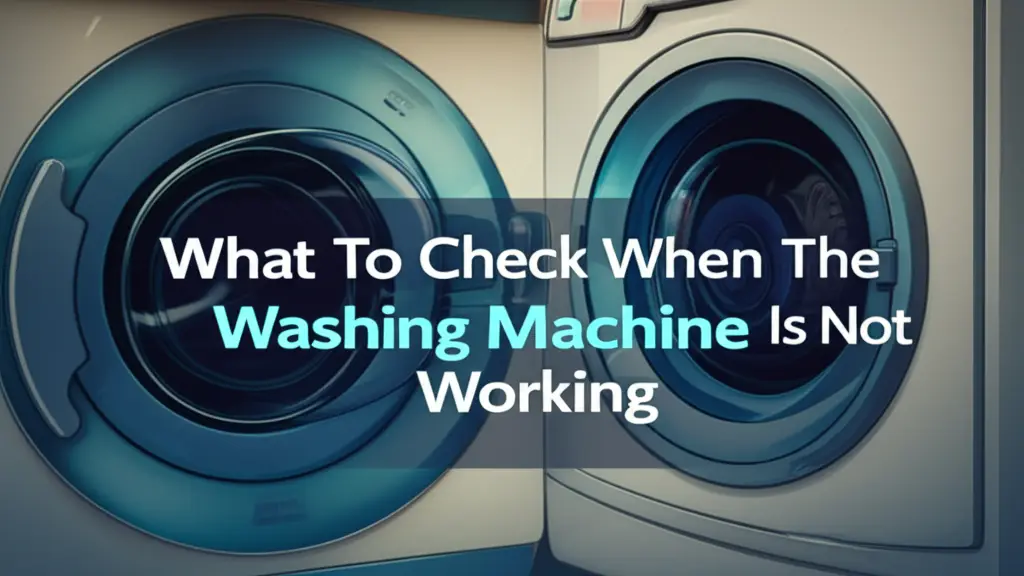· Home Appliances · 18 min read
How To Clean Fridge Without Turning It Off

Clean Your Fridge Without Turning It Off: An Easy Guide
Do you ever look inside your refrigerator and feel a sense of dread? A dirty fridge can be an unpleasant sight. Lingering odors, sticky spills, and forgotten food items often accumulate. Many people avoid cleaning their fridge because they think they must turn it off. This seems like a big hassle.
Turning off your fridge means you risk food spoilage. It also uses more energy when it restarts. I know the feeling of putting off this chore. But there is a better way. You can give your fridge a thorough cleaning without ever unplugging it. This guide shows you how to clean fridge without turning it off. We will cover everything from basic steps to deep cleaning hacks. Get ready for a sparkling clean and fresh-smelling refrigerator.
Takeaway
- Gather supplies before you start cleaning.
- Work on one section of the fridge at a time.
- Use gentle, food-safe cleaning solutions.
- Clean spills immediately to prevent buildup.
- Maintain regular quick cleaning habits.
A Quick Answer to Your Query
You can clean your fridge without turning it off by working section by section. Remove food and shelves from one area, clean it, and then replace items. This keeps your food cold and prevents energy waste. Use mild, food-safe cleaners for all surfaces.
Why Clean Your Refrigerator Without Unplugging It?
Cleaning a refrigerator is often seen as a big task. Many people believe they must empty everything and unplug the appliance. This can lead to spoiled food and a higher energy bill. I understand why people delay this chore. But there are important reasons to clean your fridge without turning it off.
First, keeping your food safe is a top priority. When you unplug a fridge, its internal temperature rises quickly. This puts perishable items at risk. Bacteria grow fast in warm conditions. You want to avoid creating a food safety hazard. A section-by-section cleaning method keeps your food properly chilled.
Second, consider the energy savings. Restarting a fridge uses a lot of power. The compressor works hard to bring the temperature back down. Cleaning your fridge without interrupting its operation avoids this energy spike. You save money on your electricity bill over time. This method is smart for your wallet and the environment.
Finally, cleaning a working fridge is simply more convenient. You do not need to find a temporary home for all your groceries. You can clean at your own pace. This makes the task less daunting. It allows for more frequent, smaller cleaning sessions. This leads to a consistently cleaner appliance.
Essential Supplies for a No-Power-Off Fridge Clean
Before you begin cleaning your fridge, gather all necessary supplies. Having everything ready saves time. It makes the cleaning process smooth. You do not want to stop mid-task to search for a rag. I always prepare my cleaning station first.
Here is a list of what you will need:
- Soft cloths or microfiber towels: Use several for wiping and drying.
- Warm water: For rinsing and basic wiping.
- Mild dish soap: A few drops added to water create a gentle cleaner.
- White vinegar: Excellent for disinfecting and removing odors. You can learn more about how to clean with vinegar and baking soda for other household tasks.
- Baking soda: A natural deodorizer and gentle abrasive.
- Spray bottle: For mixing and applying cleaning solutions.
- Small bowl or bucket: For holding cleaning solutions.
- Toothbrush or cotton swabs: For getting into tight corners and crevices.
- Empty bins or laundry baskets: For temporarily holding food items.
- Trash bags: For discarding expired or spoiled food.
Avoid harsh chemical cleaners inside your fridge. These can leave harmful residues. They might also transfer odors to your food. Natural solutions like vinegar and baking soda are safe and effective. They work well for maintaining a fresh and clean environment.
Step-by-Step Guide to Cleaning Shelves and Drawers
Cleaning the interior shelves and drawers is the core of your fridge cleaning. It requires careful handling. You will tackle one section at a time. This keeps your food cold and prevents mess. I find this method very efficient.
Clear One Section at a Time
Start with one shelf or one drawer. Remove all food items from that specific area. Place them into an empty bin or laundry basket. Work quickly to keep items cold. You can put sensitive items in a cooler with ice if you are slow. Inspect each food item as you remove it. Throw away anything expired, moldy, or questionable. This declutters your fridge.
Remove and Wash Removable Parts
Carefully take out any removable shelves, drawers, or bins from that section. These parts often collect the most spills. Carry them to your kitchen sink. Wash them with warm water and a few drops of mild dish soap. For stubborn stains or sticky residue, let them soak for a few minutes. You might also find tips for cleaning tough spots, like how to clean burnt sugar from a pan, useful for particularly sticky spills. Use a soft cloth or sponge. Avoid abrasive scrubbers. They can scratch the surfaces. Rinse them thoroughly with clean water.
Clean Fixed Interior Surfaces
While the removable parts are drying, focus on the fixed surfaces. These include the interior walls, the underside of shelves, and door shelves. Mix a solution of equal parts white vinegar and water in a spray bottle. Spray the dirty areas. Let the solution sit for a few minutes to break down grime. Use a clean, soft cloth to wipe down all surfaces. For tough spots or sticky residues, sprinkle a bit of baking soda directly onto the spot. Then scrub gently with a damp cloth. This natural abrasive works wonders. It helps remove things like how to clean burnt water off glass stove top if you have glass shelves. Pay attention to corners and edges. Use a toothbrush for tight spots.
Dry and Replace
Once the surfaces are clean, dry everything completely. Use a clean, dry microfiber cloth. Moisture can lead to mildew or mold growth. Return the dry shelves, drawers, and bins to their places. Finally, put the food items back into the now clean section. Repeat this process for each section of your fridge. Move from top to bottom or side to side. This ensures a systematic and thorough clean without unplugging the unit.
Tackling Persistent Spills and Stubborn Grime
Even with regular cleaning, some spills just love to stick around. Dried-on food, sticky residue, and old grime can be challenging. I have faced many such battles. But there are effective ways to win them without resorting to harsh chemicals. These methods keep your fridge safe and clean.
First, identify the type of spill. Is it dried juice, sauce, or something stickier like syrup? The approach changes slightly based on the mess. For general dried spills, a simple warm, damp cloth often works. Lay the cloth over the spill for about 5-10 minutes. The moisture helps soften the dried food. Then, you can wipe it away easily. This gentle pre-soak is key to preventing scratches.
For very sticky or sugary spills, white vinegar is your best friend. Mix equal parts white vinegar and warm water in a spray bottle. Spray directly onto the sticky area. Let it sit for a bit longer, perhaps 10-15 minutes. The acidity of the vinegar helps dissolve the stickiness. Then, use a damp cloth to wipe it clean. For extra stubborn spots, you can sprinkle a little baking soda on the damp area. The fine grains of baking soda act as a gentle abrasive. This helps lift the grime without scratching surfaces.
Sometimes, you might encounter mildew or minor mold spots. These often appear in moist areas like crisper drawers or around seals. For these, a solution of white vinegar is highly effective. Vinegar is a natural disinfectant. Spray undiluted white vinegar directly onto the mold spot. Let it sit for a few minutes. Then, scrub gently with a toothbrush or a small brush. Wipe it completely clean with a damp cloth. You can also get ideas from how to clean mold out of coffee maker for similar challenges in other appliances. Rinse the area with clean water afterwards. Dry thoroughly to prevent regrowth. Always ensure good ventilation when cleaning mold.
Remember to be patient with stubborn grime. Rushing can lead to scratching or incomplete cleaning. Repeat the soaking and wiping process if needed. A little persistence goes a long way. This ensures your fridge surfaces are truly clean.
Eliminating Odors and Freshening Your Refrigerator
A clean fridge is great, but a fresh-smelling fridge is even better. Odors can linger even after you wipe down surfaces. These smells often come from spilled foods or old produce. Nobody wants to open their fridge to a bad smell. I always include odor removal as a crucial step.
First, identify the source of any strong odors. Sometimes, it is a forgotten food item. Check all corners and forgotten bins. Dispose of any spoiled food immediately. Even a small piece of old cheese can create a large stench. Once you remove the source, you can begin to tackle the lingering smell.
Baking soda is a champion for odor absorption. Place an open box of baking soda on a shelf in your fridge. It acts like a sponge, drawing in unwanted smells. Replace the box every three months for best results. You can also sprinkle baking soda on shelves or inside drawers for a quick refresh. Leave it for an hour, then wipe it clean.
Another effective odor neutralizer is white vinegar. After cleaning surfaces, you can lightly spray a diluted vinegar solution. Use equal parts water and vinegar. This helps disinfect and neutralize any remaining smells. Just be sure to wipe it dry afterwards. The vinegar smell disappears as it dries, leaving a neutral scent.
For a pleasant natural aroma, you can use fresh items. A bowl of coffee grounds can absorb strong odors. Fresh lemon halves or orange peels placed in the fridge add a subtle citrus scent. Just remember to replace them every few days. Activated charcoal is another powerful odor absorber. You can buy charcoal sachets designed for refrigerators.
Regular cleaning prevents odors from building up. If you clean spills right away, smells have less chance to take hold. A clean and fresh-smelling fridge makes your kitchen a happier place.
Cleaning Fridge Door Seals and Exterior Surfaces
The internal parts of your fridge get most of the attention, but the door seals and exterior surfaces are just as important. They collect dirt, crumbs, and smudges. Cleaning them ensures your fridge runs efficiently and looks good. I always give these areas a quick once-over.
Refrigerator Door Gaskets
The rubber seals around your fridge door are called gaskets. They keep the cold air in and the warm air out. Over time, these gaskets collect crumbs, spills, and even mold. A dirty gasket can cause the door to seal improperly. This wastes energy. Cleaning them is simple but requires attention.
- Prepare a solution: Mix warm water with a few drops of mild dish soap.
- Wipe thoroughly: Dip a soft cloth into the solution. Carefully wipe down the entire length of the gasket. Pull back the folds of the rubber to clean inside the crevices.
- Use a toothbrush: For stubborn grime or mold in tight spots, use an old toothbrush. Dip it in the solution and gently scrub. Be gentle to avoid damaging the rubber. This is similar to how you might clean other small, intricate parts without removing them, like when learning how to clean door hinges without removing them.
- Rinse and dry: Use a clean, damp cloth to wipe away any soap residue. Then, dry the gaskets completely with a clean, dry towel. This prevents mold growth.
Exterior Surfaces
The outside of your fridge gets handled daily. It shows fingerprints, dust, and general kitchen grime. The type of exterior surface determines the best cleaning method.
- Stainless Steel:
- Use a microfiber cloth and a dedicated stainless steel cleaner.
- Alternatively, mix equal parts white vinegar and water in a spray bottle. Spray lightly.
- Wipe in the direction of the grain to avoid streaks.
- Buff dry with a clean, dry microfiber cloth for a streak-free shine.
- Painted or Laminated:
- Mix warm water with a few drops of mild dish soap.
- Wipe down the surfaces with a soft cloth.
- Rinse with a clean, damp cloth.
- Dry completely with a dry towel.
- Handles:
- Handles are high-touch areas. Clean them regularly with an all-purpose cleaner or a disinfectant wipe.
- Dry them thoroughly to prevent water spots.
Cleaning these often-overlooked areas keeps your fridge looking neat. It also helps it run efficiently. This is an important part of your no-power-off fridge cleaning routine.
Maintaining a Clean Fridge: Quick Tips for Daily Habits
A deep clean is great, but regular maintenance makes a big difference. It prevents grime buildup. It also keeps your fridge smelling fresh. I have found that small, consistent efforts save a lot of work later. Here are quick tips for daily and weekly fridge care.
First, address spills immediately. As soon as something spills, grab a cloth and wipe it up. Dried spills are much harder to clean. Prompt action prevents stains and odors from setting in. This simple habit saves you a lot of scrubbing time.
Second, do a quick “inventory check” regularly. Before you go grocery shopping, open your fridge. Look for anything that is expiring soon. Throw away old produce or leftovers. This prevents food from spoiling and creating odors. It also makes space for new groceries. I do this every time I plan a shopping trip.
Third, wipe down frequently used areas. The door shelves and the front of main shelves get the most traffic. Give them a quick wipe with a damp cloth every few days. This prevents a layer of grime from forming. You can use a mild solution of water and vinegar for this.
Fourth, keep food organized. Use clear containers for leftovers. Label items if needed. Group similar items together. An organized fridge is easier to keep clean. You can see everything clearly. This reduces the chances of forgotten food.
Finally, consider using fridge liners. You can buy special liners or use plastic wrap. Place them on your shelves and in drawers. When a spill happens, you can simply remove and replace the liner. This protects the shelves from direct contact with spills. It makes cleaning much faster. These small habits turn fridge maintenance into a simple part of your routine.
Troubleshooting Common Fridge Cleaning Challenges
Even with the best intentions, cleaning a fridge can present challenges. You might encounter tough stains, persistent odors, or tricky areas. Do not worry. There are solutions for most common problems. I have learned a few tricks over the years.
One common issue is mystery stains. Sometimes you find a dried mark and have no idea what caused it. For these, a paste of baking soda and a little water works wonders. Apply the paste directly to the stain. Let it sit for 15-20 minutes. The baking soda will gently lift the stain. Then, wipe it away with a damp cloth. This is a safe and effective method for most surfaces.
Another challenge is very stubborn sticky residue. This might be from spilled syrup or old condiments. If the baking soda paste does not fully work, try a bit of rubbing alcohol on a cotton ball. Rub gently on the sticky spot. Alcohol helps dissolve many sticky substances. Always test a small, inconspicuous area first. This ensures it does not damage your fridge’s surface.
Persistent bad odors are frustrating. If you have already removed all spoiled food and used baking soda, consider activated charcoal. This material is highly absorbent. Place a few charcoal briquettes (unused, for grilling) or activated charcoal packets in a shallow bowl. Leave it in the fridge for a few days. It can absorb even strong, lingering smells. Ensure proper ventilation by keeping the fridge door open for a few minutes after cleaning. This helps air out the interior.
For difficult-to-reach areas, like behind drawers or under fixed shelves, use a long-handled brush or a damp cloth wrapped around a ruler. A vacuum cleaner with a narrow hose attachment can also pick up crumbs in tight spots. For mold growth, remember that a strong vinegar solution is your best bet. Apply, scrub, and dry thoroughly to prevent its return.
These troubleshooting tips help you tackle specific problems. They ensure your fridge becomes completely clean and fresh. Remember, patience and the right tools make any cleaning challenge manageable.
Advanced Tips for a Truly Sparkling Fridge
You have mastered the basics of how to clean fridge without turning it off. Now, let us look at some advanced tips. These steps take your fridge cleanliness to the next level. They ensure every part shines. I love seeing a truly sparkling fridge after a thorough clean.
First, consider deep cleaning the condenser coils. While this typically requires moving the fridge and often unplugging, you can sometimes access the front grille. Dust and pet hair accumulate on these coils. This reduces efficiency. If your fridge has a removable front grille, you can carefully vacuum the coils without moving the entire unit. Use a brush attachment on your vacuum. This small effort improves energy efficiency.
Second, pay attention to the drip tray. Most fridges have a drip tray underneath, usually near the bottom. This tray collects condensation. It can become a breeding ground for mold and odors. While difficult to access without moving or tilting the fridge, some models allow partial access from the front or back. If you can reach it, clean it with hot soapy water. For hard-to-reach ones, pour a cup of white vinegar down the defrost drain tube. This can help clear and sanitize the tray.
Third, polish stainless steel surfaces for a mirror-like finish. After cleaning, use a dedicated stainless steel polish. Apply it with a microfiber cloth, wiping in the direction of the grain. This hides streaks and repels fingerprints. Your fridge will look brand new.
Fourth, use essential oils for a pleasant scent, but sparingly. After cleaning, place a cotton ball with a few drops of lemon or tea tree essential oil in a small dish. Place it in the back of the fridge. Tea tree oil has natural antibacterial properties. Essential oils provide a subtle, fresh aroma. Do not overdo it. You do not want food to absorb the scent.
Finally, keep a small cleaning kit nearby. A spray bottle of vinegar solution, a microfiber cloth, and a box of baking soda can be stored under the sink. This makes quick cleanups even faster. You will never have an excuse to let spills linger. These advanced tips ensure your fridge stays in top condition.
FAQ Section
Is it safe to clean the fridge without turning it off?
Yes, it is safe to clean the fridge without turning it off. Work on one section at a time. This keeps the internal temperature stable. Your food remains cold and safe. This method also saves energy.
What is the best homemade cleaner for a fridge?
A mixture of equal parts white vinegar and warm water is an excellent homemade fridge cleaner. You can also use a few drops of mild dish soap in warm water. For odors, baking soda is very effective. Avoid harsh chemicals.
How often should I clean my fridge without turning it off?
For a quick wipe-down and spill cleanup, do it weekly. A more thorough section-by-section cleaning, including shelves and drawers, should happen every 1-2 months. This keeps it consistently clean and fresh.
Can I use bleach to clean the inside of my fridge?
No, avoid using bleach inside your fridge. Bleach is a harsh chemical. It can leave harmful residues. It can also contaminate your food with its strong smell. Stick to food-safe cleaners like vinegar, baking soda, or mild dish soap.
How do I prevent mold from growing in my fridge?
To prevent mold, always dry all surfaces thoroughly after cleaning. Address spills immediately. Maintain proper humidity levels if your fridge has a control for it. Ensure good air circulation inside your fridge. Regularly check and clean gaskets.
What should I do with food during cleaning?
During cleaning, place food items from the section you are working on into empty bins or laundry baskets. For very perishable items, use a cooler with ice packs. Work quickly to minimize the time food is out of refrigeration.
Conclusion
Cleaning your fridge might seem like a daunting task. The idea of turning it off often stops people from starting. But as we have explored, you can achieve a sparkling clean and fresh-smelling refrigerator without ever unplugging it. This method saves energy, protects your food, and makes the chore much more manageable.
By working section by section, using simple, food-safe cleaners like vinegar and baking soda, and establishing quick maintenance habits, your fridge can always be in top condition. Remember to tackle spills immediately and eliminate lingering odors. A clean fridge improves your kitchen environment and ensures your food stays safe. Start your no-power-off fridge cleaning journey today. Enjoy the satisfaction of a beautifully maintained appliance.
- clean fridge without turning off
- no-power-off fridge cleaning
- refrigerator maintenance
- quick fridge clean
- fridge odor removal




